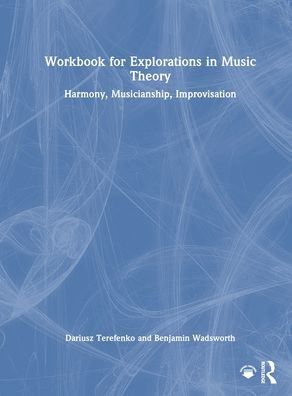Features of this book include:
● Modular lessons centered on inquiry-driven pedagogy, offering flexibility
● Lesson difficulty is marked to allow instructors to easily organize their course
● A wide variety of exercises and practice tasks incorporated throughout the chapters
● Improvisation Labs allow students to practice concepts through improvisation
● Historical Minutes introduce students to historical theorists and enable them to understand music theory as a living practice
● Composer Spotlights highlight the stories of composers whose work is featured in the chapter, bringing forward underrepresented composers
● Explore Online features provide additional exercises and coverage of advanced topics through an accompanying online resource
A flexible, modular organization allows the book to be used in a variety of course structures, accommodating a wide variety of schools. Enhancing improvisation and composition skills, introducing historical perspectives, incorporating diverse repertoire, and enabling students to better connect theory concepts with practical applications, this text provides a new and effective way to teach harmony.
This accompanying workbook offers exercises to accompany each chapter in the book. Divided into warmup and homework sections, the exercises in the workbook provide additional practice with the skills addressed in the textbook through a range of approaches, including writing, composition, and identification.
Features of this book include:
● Modular lessons centered on inquiry-driven pedagogy, offering flexibility
● Lesson difficulty is marked to allow instructors to easily organize their course
● A wide variety of exercises and practice tasks incorporated throughout the chapters
● Improvisation Labs allow students to practice concepts through improvisation
● Historical Minutes introduce students to historical theorists and enable them to understand music theory as a living practice
● Composer Spotlights highlight the stories of composers whose work is featured in the chapter, bringing forward underrepresented composers
● Explore Online features provide additional exercises and coverage of advanced topics through an accompanying online resource
A flexible, modular organization allows the book to be used in a variety of course structures, accommodating a wide variety of schools. Enhancing improvisation and composition skills, introducing historical perspectives, incorporating diverse repertoire, and enabling students to better connect theory concepts with practical applications, this text provides a new and effective way to teach harmony.
This accompanying workbook offers exercises to accompany each chapter in the book. Divided into warmup and homework sections, the exercises in the workbook provide additional practice with the skills addressed in the textbook through a range of approaches, including writing, composition, and identification.

Workbook for Explorations in Music Theory: Harmony, Musicianship, Improvisation
594
Workbook for Explorations in Music Theory: Harmony, Musicianship, Improvisation
594
Product Details
| ISBN-13: | 9781032853994 |
|---|---|
| Publisher: | Taylor & Francis |
| Publication date: | 12/16/2024 |
| Pages: | 594 |
| Product dimensions: | 8.25(w) x 11.00(h) x (d) |
